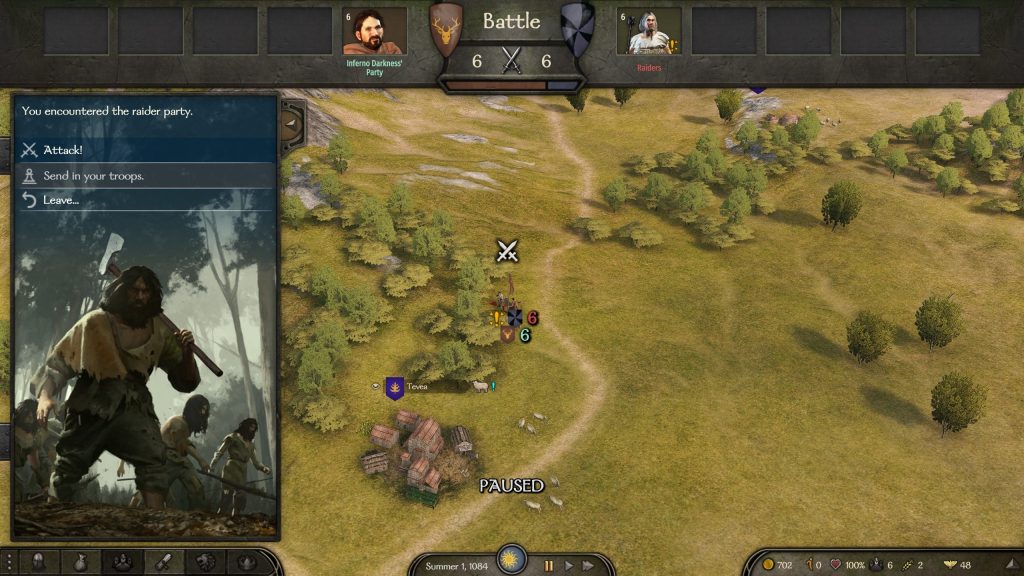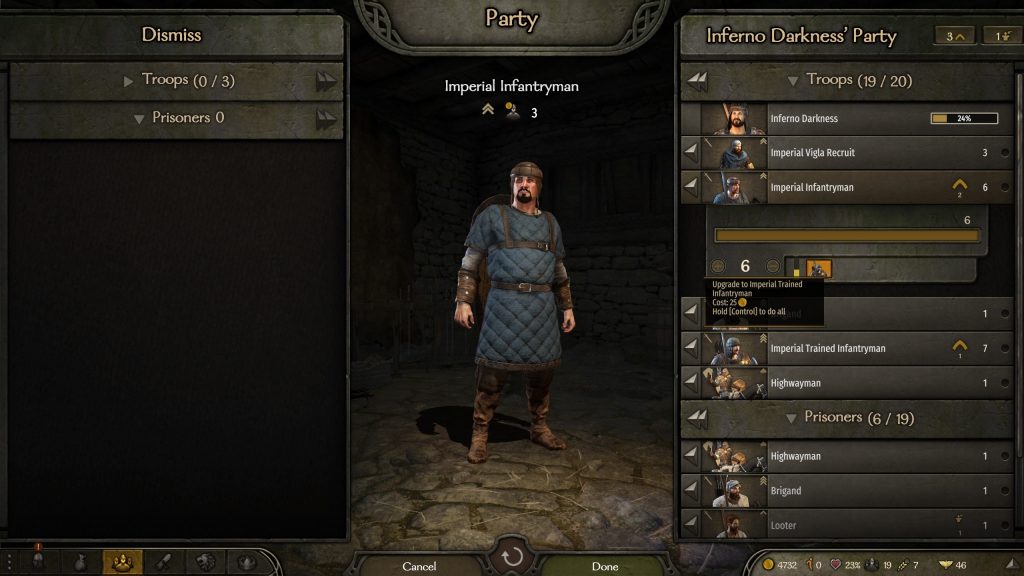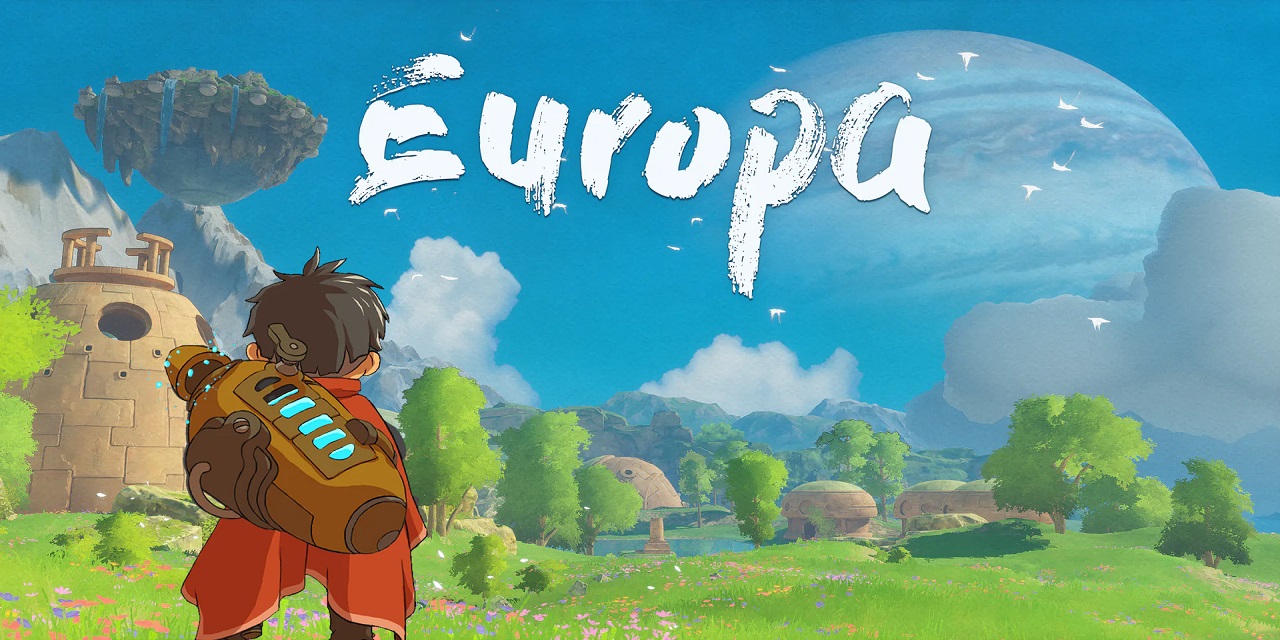Mount & Blade II: Bannerlord is a strategy/action RPG hybrid developed by TaleWorlds Entertainment and co-published by Prime Matter. Originally releasing on Steam Early Access in March 2020, v1.0 of Bannerlord on PC has just released on October 25, 2022, as well as seeing the game release on Xbox and PlayStation consoles. Bannerlord is a follow up to 2010’s Mount & Blade: Warband, set 200 years before the Calradia we know from the previous games in the series. It takes the tried and tested formula of the series, building up an army, earning favour of neighbouring lords and conquering cities, and enhances most aspects of graphics and gameplay, particularly castle sieges.
There is a story campaign you can play as well as a sandbox mode and custom battles. I started a new campaign that has a decent story to get you through the tutorial and learning the basics, then the training wheels come off and you are left to forge your own destiny. First though you need to create your character which is quite involved in terms of backstory. You will choose a culture where each gives bonuses and penalties such as increased production bonus to villages, but at an increased cost to recruit lords to your army, and other such combinations out of six different cultures.
Next you can customise the look of your main character which has a decent number of options and details. Finally, you must make several decisions on your family upbringing and each decision gives you some starting stats and bonuses. I chose to specialise in medicine, one-handed combat, horse riding and a few points in related skills like blacksmithing. Once you’re happy with those decisions, we meet your brother Nogand where he explains two children have been kidnapped, Varic and Alda. At this point we can choose to do the tutorials, which I did, or go straight into the game. I completed the combat tutorials which were quite involved, and I was glad to have had the practice, particularly with aiming my bows and crossbows as well as one-handed weapon swings and blocking directions.
Once you’ve completed the combat tutorials, you are placed onto the overworld view where you travel to the next village. You can converse with village leaders and key npcs from the overworld window, or you can enter the village and walk around to talk to people in person. This is cool to do from time to time to see villagers going about their business, purchase items from npc merchants or visit the tavern where you can buy a mug of ale or recruit hero companions that you can develop with their own army and send on missions. There are a couple of quests to complete which round out the tutorial by recruiting troops to your army and then putting you into battle. On the overworld map you will see a group of bandits, raiders or mercenaries moving about and the icon number shows the army strength. This tells you briefly whether you can handle the fight or not, and if so, you can engage.
These early tutorial combat scenarios have you facing around 6-10 combatants. Starting with basic commands such as follow or charge, you will lead your band of merry men into battle and hopefully come out victorious. In later battles you will need to use battlefield tactics, ordering your troops into formations, and tactics such as hiding your archers in some trees to attack from another angle throughout the battle. As your army grows and you start to take on keeps and castles, you will build siege weapons such as trebuchets. In this respect it’s a bit like playing a Total War game and you can be as strategic as you like.
The early game of Mount & Blade II: Bannerlord features a lot of basic RPG fetch quests like collecting several axes, recruiting prisoners to work in mines, obtaining grain, clearing out bandits from their hideout, and so on. All the while you are gaining renown for your name as well as building yourself an army of troops that are being upgraded if you don’t manage to lose them in your battles. Upgrading your troops costs gold but some of the basic quests between villages can net you some good gold yields as well as new gear for yourself too. I earned an awesome helmet after my first arena win.
This was a good introduction for me being new to the series, but for veterans of the Mount & Blade series, these may be a cumbersome but necessary evil to build up items and funds to grow your army. From here you can start to play the game to your playstyle, such as being a trader, mercenary for hire, an army general, or go on a rampage stealing and declaring war on small villages. Ultimately this a warfare game about taking over castles and lands, so combat proficiency through crafting weapons and growing your army is ultimately what I worked towards. Completing quests and earning favour with factions will also unlock more of their troop types to recruit into your army, and upgrading them down their various paths is worth investing some time into.
As you travel around the overworld, you realise just how large the game world is and it is incredibly well detailed with great lighting as day turns into night. You can specialise your horse riding such that you ride faster at night, or a heap of other benefits. I did wish the tutorial provided me with a bit more direction as to what to do or aim for next. You do have a couple of overarching primary quests in the story campaign, to obtain information about an artifact and to grow your army, but in between those you need to forge your own story. This is where I usually become unstuck in games like this as there’s so much complex scope of things to do that I don’t an idea of what to aim for. The in-game encyclopedia is decent enough that it provides some hints on differing gameplay features and roughly how to use them.
Eventually you will start to gain attention from other factions, and you can choose to side with them or declare war, which then upscales the complexity of encounters and overworld exploration as you’ll have more enemies to contend with. There are hours and hours of gameplay ahead as you pick battles in order to grow your army, outfit them and keep them fed, compete in combat arenas to win favour of nearby lords, and eventually start a castle of your own. This opens you up to being raided so you will want to have built up some armies led by hero companions.
In speaking to friends who have played the Mount & Blade series for years, one of the biggest drawcards to playing Mount & Blade Warband was the modding scene. A quick search shows me there are complete overhaul mods such as Warcraft III, Lord of the Rings and a heap of other mods that can change the feel of the game while keeping to the core mechanics. The mod scene for Mount & Blade II: Bannerlord has begun on Steam Workshop as well as popular mod sites Nexus Mods and ModDB, however will likely take a few more months at least to really get going now the game is in version 1.0 on PC, and no doubt there will be some great mods made by some talented gamers out there.
Overall, Mount & Blade II: Bannerlord is a seamless and well detailed meld of strategy and action RPG with outstanding graphics upgrades for most of the game. The battle tactics you can employ on the battlefield are outstanding, from small skirmishes to large scale castle sieges. This is a game I will be returning to often, especially as the mod scene picks up pace now with the full release of the game.
This review utilised a Steam key provided by Plaion ANZ and Mount & Blade II: Bannerlord is out now on Steam, Xbox and PlayStation.
#roundtablecoop
Written by: @ChrisJInglis









